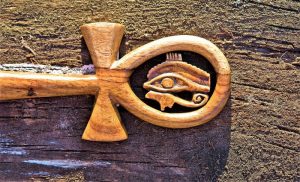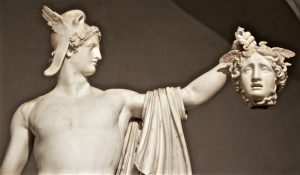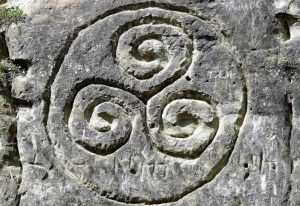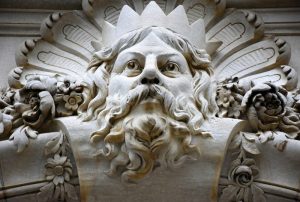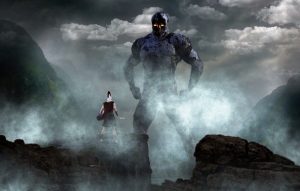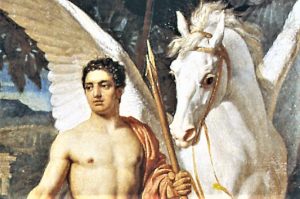Egyptian mythology
Egyptian mythology was a belief structure and the underlying form of Egyptian culture since at least 4000 B.C. as can be seen from the funerary practices and paintings found in tombs, which lasted until 30 A.D. with Cleopatra VII's death, the last of Egypt's Ptolemaic rulers. Every aspect of Egyptian life in ancient Egypt was informed by stories relating the creation of the world and the sustenance of that world thanks to the gods.
What is Egyptian mythology?
It is a group of religious beliefs that was practiced in Ancient Egypt from the pre-dynastic era until the emergence of Christianity. It has an important iconography to represent their deities with human bodies and animal heads.
Origin
Egyptian civilization has prospered continuously since prehistoric times. While the leaders of civilization, writing, natural climate, religion and borders have changed many times over the centuries, Egypt still exists as a modern country.
Civilization has always been strongly coupled with other parts of the world, bringing and exporting goods, religions, food, people and ideas. Occasionally, ancient Egypt ruled the territory outside the border of the modern country, controlling the territory of what is now Sudan, Cyprus, Lebanon, Syria, Israel and Palestine.
Egyptian religious beliefs had a great influence on other cultures through their transmission through trade and spread mainly after the opening of the Silk Road in 130 B.C. as Alexandria, the Egyptian port city, was an important commercial center.
The importance of Egyptian mythology for other cultures lies in its development of the concept of eternal life after death, in its benevolent deities and in reincarnation. Both, Pythagoras and Plato of Greece were said to have been influenced by Egyptian beliefs about reincarnation and Roman religious culture, taken from both Egypt and other civilizations.
Characteristics of Egyptian mythology
The main characteristics of Egyptian mythology are the following:
- They believed in life after death.
- They were polytheists, they had an excessive number of Gods, each of them with a specific representation.
- They practiced different funeral rites.
- The sun was seen as their supreme God.
- Some of the animals they raised were also considered sacred.
- They believed and assured that the soul could survive death if the body was properly preserved.
- Embalming and mummification of the dead were performed.
- Most of the Gods had their respective temples.
- They used iconography to represent their Egyptian gods and they used human torsos and animal or human heads.
Symbols
Some of the main symbols of Egyptian mythology were the following:
- Ankh: symbol of eternal life. It is believed that when you put it in your mouth you offered someone the breath of life, necessary to continue after death. It symbolizes eternity, transcendence and infinity.
- Maat and his pen: symbol of truth, justice and morality. It gave harmony and represents constant equilibrium. She was a goddess with wings which represented cosmic stability.
- Ra: the sun god and one of the most important figures. He represented power, force and life. He was responsible for the natural cycles of life, death and resurrection. He had the head of a hawk, the Sun and a sacred staff.
- Dung beetle: symbolizes creation and birth. It was related to the movement of the Sun and the cycles of life.
- Shen: represented eternity. It was a hoop held by strings, which has no beginning or end. It also symbolizes protection and care.
Gods of Egyptian mythology
The main gods of Egyptian mythology were:
- Geb: he was the god of cold, of abysses and watery depths.
- Amenotef: was not a god. He was an architect who had the best knowledge of the sciences, mysteries and rites.
- Anubis: created funeral rites and embalming. He was represented as a man with a jackal head and dark skin.
- Isis: she was the first daughter of Geb and Nut. She taught women how to grind grain, spin, instituted marriage and family, and taught how to heal diseases. She represented heaven as wife and mother of the sun and stars.
- Nekbet: goddess who represented water. She was the vulture goddess who reigned in the capital of Upper Egypt and was represented flying and holding a ring or a royal emblem.
- Osiris: was the fourth divine pharaoh, had a role as cosmic god and sun personification, vegetation and life, and the dead. He was also seen as a civilizing god; his main temple was in Heliopolis.
- Rá: he was considered the creator of all gods and men.
Creatures and monsters of Egyptian mythology
Among the most common creatures of Egyptian mythology we can mention the Sphinx, which had a lion’s body and a man’s head; Amenait who was a strong and ferocious creature that lived in the Nile, had a hippopotamus torso and a reptile’s tail, with lion’s claws and crocodile’s jaws. Apophis was an enormous, indestructible and malignant serpent that wanted to break the cosmic order. Bennu was a mythological bird and was related to creation, death and sun, according to legend, it emerged from a burst of the heart of Osiris.
Featured stories and legends
The Apis ox: Osiris’ soul was believed to be in the body of an ox, so they worshipped him. The ox was black, had a white spot on the forehead and a crescent on the right side. When it was found, it was fed and served by women who were the only ones who had the right to see it and then, it was carried to Memphis where it was received by priests and taken to stables where, depending on where it chose to be, it would be the omen for Egyptians.
Isis and the seven scorpions seek Seth: Isis wanted to have revenge on Seth and went to seek him with seven scorpions who could hide. They came to a woman’s house to whom they asked for shelter, but she did not want to help them, so Isis and his scorpions were very offended. One of the scorpions wounded the woman’s son to death, but Isis felt pity and did not want to let an innocent man die, running to save the child. The rich woman, regretted, greeted Isis and the peasant woman.
How to cite this article?
Briceño V., Gabriela. (2019). Egyptian mythology. Recovered on 4 May, 2025, de Euston96: https://www.euston96.com/en/egyptian-mythology/
